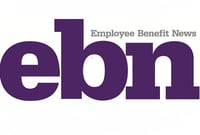Consolidation Corner
-
Blog
- 401k Cash Outs
- 401k Consolidation
- 401k Plan Termination
- America's Mobile Workforce
- Assisted Roll-in
- Auto Enrollment
- Auto Portability
- Auto Portability Simulation
- Automatic Roll-In
- Automatic Rollover
- Automatic Rollovers
- Boston Research Technologies
- CARES act
- Common Mistakes
- DIY Roll-In
- DOL Advisory Opinion
- EBRI
- Employee Benefit News
- ERISA Advisory Council
- Financial Services Roundtable
- Financial Wellness
- How-To
- In-Plan Consolidation
- Leakage
- Lifetime Plan Participation
- Lost Participants
- Managed Portability
- Mandatory Distributions
- MarketWatch
- Missing Participant IRA
- Missing Participants
- National Retirement Savings Cash Out Clock
- Participant Transition Management
- PLANSPONSOR
- Portability Services Network
- PSCA
- Public Policy
- RCH Services
- Retirement Income
- Retirement Plan Portability
- retirement research
- Retirement Savings Consolidation
- Retirement Savings Portability
- Roll-In
- Safe Harbor IRA
- Saver's Match
- Security
- Small Accounts
- Stale Dated Checks
- Synthetic Tenure
- Uncashed Check Services
- Uncashed Distribution Checks
- Video
- Webcast
- What is a Missing Participant?
Automatic Rollover
Consolidation Corner Blog
Consolidation Corner is the Retirement Clearinghouse (RCH) blog, and features the latest articles and bylines from our executives, addressing important retirement savings portability topics.
Auto Portability: Adoption Figures Soar; Thought Leaders Want More
 October has been a phenomenal month for auto portability, with plan sponsor adoption surging and industry thought leaders increasingly recognizing the promise of auto portability in finally solving longstanding 401(k) system portability issues.
October has been a phenomenal month for auto portability, with plan sponsor adoption surging and industry thought leaders increasingly recognizing the promise of auto portability in finally solving longstanding 401(k) system portability issues.
Safe-Harbor IRAs Don’t Offer a Long-Term Saving Solution for Plan Participants
 During the past several years, much progress has been made to simplify the process of enabling defined contribution plan participants to transfer their savings from one plan to another when they change jobs. These strides have been made thanks to an ongoing partnership between the private and public sectors, and between Democrats and Republicans in Congress.
During the past several years, much progress has been made to simplify the process of enabling defined contribution plan participants to transfer their savings from one plan to another when they change jobs. These strides have been made thanks to an ongoing partnership between the private and public sectors, and between Democrats and Republicans in Congress.
In November 2023, we saw the launch of the Portability Services Network, with our nation’s leading retirement plan record-keepers—Alight Solutions, Empower, Fidelity Investments, Principal, TIAA, and Vanguard—on board as founding members. The Portability Services Network makes the digital auto portability solution a reality for helping Americans keep their retirement savings invested in the system and working for them.
This Earth Day, We are Reminded to Recycle 401(k) Savings, Instead of Adding to the Landfill of Safe Harbor IRAs
 On April 22, we will celebrate the 54th annual Earth Day, which gives us the opportunity to celebrate our planet’s natural surroundings and contemplate how we can help preserve them. The advent, and ongoing expansion of recycling programs has enabled our society to reduce our waste—and although there is still quite a long way to go, we have evolved significantly from the post-World War II throwaway culture.
On April 22, we will celebrate the 54th annual Earth Day, which gives us the opportunity to celebrate our planet’s natural surroundings and contemplate how we can help preserve them. The advent, and ongoing expansion of recycling programs has enabled our society to reduce our waste—and although there is still quite a long way to go, we have evolved significantly from the post-World War II throwaway culture.
A More-Enlightened Approach to Uncashed Distribution Checks
 No retirement plan sponsor likes the idea of dealing with uncashed distribution checks, nor do they wish to draw unwanted regulatory attention or to become embroiled in costly litigation because of their uncashed check policies.
No retirement plan sponsor likes the idea of dealing with uncashed distribution checks, nor do they wish to draw unwanted regulatory attention or to become embroiled in costly litigation because of their uncashed check policies.
Unfortunately, many plan sponsors place themselves in precisely that spot, becoming unnecessarily over-burdened with unresolved uncashed checks, while inviting unwanted regulatory scrutiny and/or legal challenges by embracing flawed uncashed check policies.
A more-enlightened approach to managing the problem of uncashed checks seeks to minimize their numbers, while simultaneously steering clear of the “red flags” that could land them in hot water.
Auto Portability is Poised to Make an Even Bigger Impact in 2024
 On the last day of 2023, a key provision of the SECURE 2.0 Act—increasing the limit on small 401(k) accounts subject to automatic rollovers into safe-harbor IRAs from $5,000 to $7,000—went into effect.
On the last day of 2023, a key provision of the SECURE 2.0 Act—increasing the limit on small 401(k) accounts subject to automatic rollovers into safe-harbor IRAs from $5,000 to $7,000—went into effect.
Focus Shifts to Plan Sponsors as Portability Network Set to Go Live
 When the Portability Services Network (PSN) goes live at the beginning of the fourth quarter of 2023, the focus of attention for auto portability will shift from the industry-led network of service providers to the leading plan sponsors who will begin adopting the new plan feature.
When the Portability Services Network (PSN) goes live at the beginning of the fourth quarter of 2023, the focus of attention for auto portability will shift from the industry-led network of service providers to the leading plan sponsors who will begin adopting the new plan feature.
As PSN operations commence, and the automated plan-to-plan consolidation of small balances begins, a familiar industry adoption pattern will emerge – where innovators within the plan sponsor community lead the charge and are quickly followed by others.
The Future is Brighter for Small-Balance Retirement Accounts
 While small-balance retirement savings accounts have fared poorly in the past, their future has never looked brighter. Real progress is being made in reducing their numbers while simultaneously preserving and consolidating their savings, vs. previous “solutions” that encouraged them to cash out or exiled them to dead-end safe harbor IRAs.
While small-balance retirement savings accounts have fared poorly in the past, their future has never looked brighter. Real progress is being made in reducing their numbers while simultaneously preserving and consolidating their savings, vs. previous “solutions” that encouraged them to cash out or exiled them to dead-end safe harbor IRAs.
The 401(k) “House-Cleaning” to Come
 The increase in the automatic rollover threshold from $5,000 to $7,000, as provided for in section 304 of the SECURE 2.0 legislation, will become effective for mandatory distributions made after December 31, 2023.
The increase in the automatic rollover threshold from $5,000 to $7,000, as provided for in section 304 of the SECURE 2.0 legislation, will become effective for mandatory distributions made after December 31, 2023.
What will be the impact of these provisions, if fully embraced by plan sponsors? One thing is certain – on both a one-time and ongoing basis, far more terminated participants will be subject to the automatic rollover provisions of their former-employers’ plans.
Why DEI and ‘Traditional’ Automatic Rollovers Don’t Mix
 In the retirement community, momentum is growing to make our 401(k) system more inclusive and to ensure that retirement savings are more equitable.
In the retirement community, momentum is growing to make our 401(k) system more inclusive and to ensure that retirement savings are more equitable.
How Consultants Can Miss the Mark on 401(k) Automatic Rollovers
 I'm a big fan of 401(k) plan consultants, who’ve been forceful advocates for the adoption of best practices at leading retirement plan sponsors. So, it’s surprising to me that, when it comes to automatic rollover programs, consultants sometimes miss the mark, at least in terms of participant outcomes.
I'm a big fan of 401(k) plan consultants, who’ve been forceful advocates for the adoption of best practices at leading retirement plan sponsors. So, it’s surprising to me that, when it comes to automatic rollover programs, consultants sometimes miss the mark, at least in terms of participant outcomes.
-
Blog
- 401k Cash Outs
- 401k Consolidation
- 401k Plan Termination
- America's Mobile Workforce
- Assisted Roll-in
- Auto Enrollment
- Auto Portability
- Auto Portability Simulation
- Automatic Roll-In
- Automatic Rollover
- Automatic Rollovers
- Boston Research Technologies
- CARES act
- Common Mistakes
- DIY Roll-In
- DOL Advisory Opinion
- EBRI
- Employee Benefit News
- ERISA Advisory Council
- Financial Services Roundtable
- Financial Wellness
- How-To
- In-Plan Consolidation
- Leakage
- Lifetime Plan Participation
- Lost Participants
- Managed Portability
- Mandatory Distributions
- MarketWatch
- Missing Participant IRA
- Missing Participants
- National Retirement Savings Cash Out Clock
- Participant Transition Management
- PLANSPONSOR
- Portability Services Network
- PSCA
- Public Policy
- RCH Services
- Retirement Income
- Retirement Plan Portability
- retirement research
- Retirement Savings Consolidation
- Retirement Savings Portability
- Roll-In
- Safe Harbor IRA
- Saver's Match
- Security
- Small Accounts
- Stale Dated Checks
- Synthetic Tenure
- Uncashed Check Services
- Uncashed Distribution Checks
- Video
- Webcast
- What is a Missing Participant?
